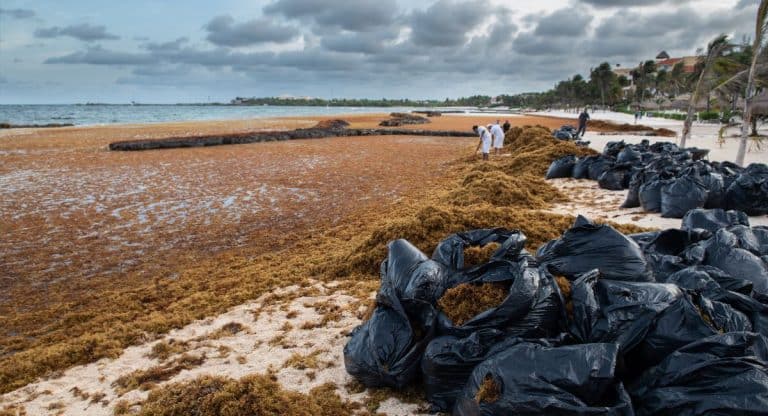A massive amount of seaweed, approximately 135 tons, is expected to wash ashore on the tranquil waters of the Mexican Caribbean this week. The arrival was originally expected between April 6 and April 11, but temperatures dropping in the region and beaches being cleaned up, pushed the arrival to this week.
Popular beaches like Tulum, Xcacel, Playa del Carmen and Cozumel will be impacted with modern levels of sargassum, with the bulk of the sargassum expected after Monday, April 15. As such, The Secretary of the Navy’s Gulf and Caribbean Oceanography Institute escalated matters to a category two alert for sargassum.
This is typical for the region as sargassum season in Mexico begins in April and stretches until August, but visitors still should be wary. Although the Navy led efforts collecting the algae at sea and installed 8,650 meters of protective barriers to prevent massive beaching, sargassum will still land on the shores.
Affecting beach aesthetics along with usability, the tourism sector is on high alert as to best clean the beaches to protect visitors and locals alike. Community efforts along with governmental efforts across the region are in place to clean the beaches.
One bit of good news though is that beaches are seeing much less sargassum than in 2023, primarily due to low temperatures in the ocean preventing the algae from reproducing uncontrollably.
By mid-March, 800 tons less of sargassum was collected than the same period in 2023, meaning that beaches across the Mexican Caribbean beaches are cleaner than they were in previous years.
A reminder for those who haven’t come across sargassum before, when sargassum decomposes, the hydrogen sulfide gas produced makes it smell like rotten eggs. More harmful than the smell, it can cause the skin to turn red and into an itchy rash.
The naturally occurring brown seaweed is composed of gas-filled structures which keep the brown seaweed buoyant. And it is the strong currents and winds which wash the sargassum to shores.


